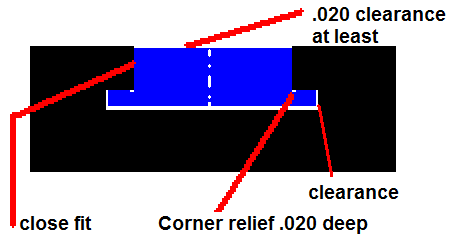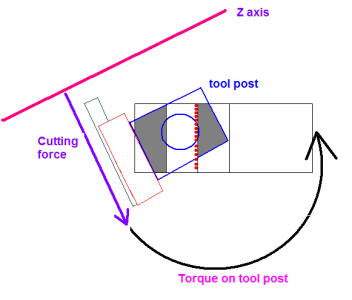- Joined
- Oct 11, 2016
- Messages
- 3,864
Ahh, T nut! of course! My bad...Clearly I didn't do a good job describing what I did. I was referring to the T nut. I removed to much material and need to start over with new material. I just don't know if I should use anything special for the new T nut.
I use whatever steel is available, usually 1018. This is how I make them...
I make the T nut 'just fit' in the top of the T slot and the wide part will have some clearance at each side. That's because the upper part of the t slot is usually finished or even ground. The wide part of the t slot is always left as milled. The contact part of the T nut has to make good, even contact. -- If you are a perfectionist, you will use prussian blue to confirm it. I never have, but probably should. If you are really a nit-picker, mill a bit of relief on the inside edges of the T nut... Here's a picture of what I mean:



